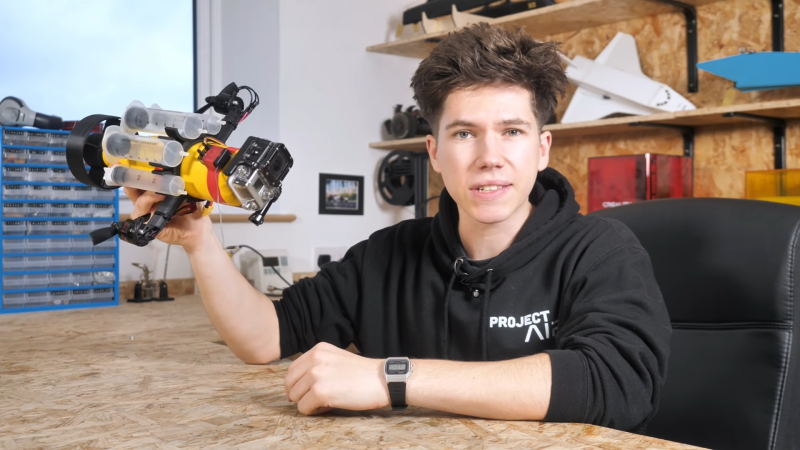Submarines are one of the harder modes of transport to build in radio-controlled form. Doing so involves tangling with sealing electronics from water ingress and finding a way to control the thing underwater. It’s a challenge, but one relished by [Project Air] in his latest build.
The body of the sub was built from a drink bottle, serving as a stout container upon which could be mounted all the necessary hardware. Filling the bottle with water allowed buoyancy to be adjusted to a neutral level. Twin brushless motors were used for drive, while servos were waterproofed using a combination of rubber gaskets, olive oil, and sealing spray.
Control was via a floating 2.4 GHz receiver, as high-frequency radio signals don’t penetrate water very far. The floating box also carries an FPV transmitter to allow the sub to be piloted via video feed. Rather than using a ballast system, the sub instead dynamically dives by thrusting itself beneath the water’s surface.
Unfortunately, water sloshing around in the partially-filled drink bottle meant controlling the sub in pitch was virtually impossible. To fix this, [Project Air] filled the bottle completely, and then used some plugged syringes on the outside of the body to adjust buoyancy. The long heavy tether was also replaced with a much shorter one, and the sub became much more fun to drive around under water.
The build was actually built for a friendly contest with [DIY Perks], a fellow Youtuber whose efforts we covered recently. It also bears noting that better results can be had by using lower-frequency radio gear. Video after the break.
















“a drink bottle, serving as a stout container”
That would be Guinness, then!
(Other porters are available).
Now there’s a proper submarine! (It’s painted yellow 🎨)
B^)
A useful long range underwater communications link appears to be hard problem to solve. Currently the practical solution seems to be drive over the area of interest in a boat and drop the sub straight down on a line that acts as control and telemetry link.
The longest range stuff I know of and have used are acoustic modems. Super low transmission rates and shallow water applications are tough.
Great work! You can get much better range underwater with older 75 and 72mhz radios compared to modern 2.4ghz. My father makes scale RC subs and that is what he uses.
I like the tethered receiver idea. Indeed, water and radio waves don’t mix super well. I really like this project and a submarine is always such a fun engineering challenge. Water is a humbling foe to battle lol. I’m enjoying this recent bout of mini subs on HaD :)
Radio waves propagate very well at lower frequencies, although that usually entails the use of a relatively large antenna. No doubt why most opt for the umbilical cord option.
The long antennas are because of the low frequency.
But to contact real submarines, massive power is used. It’s because the water attenuates the signal.